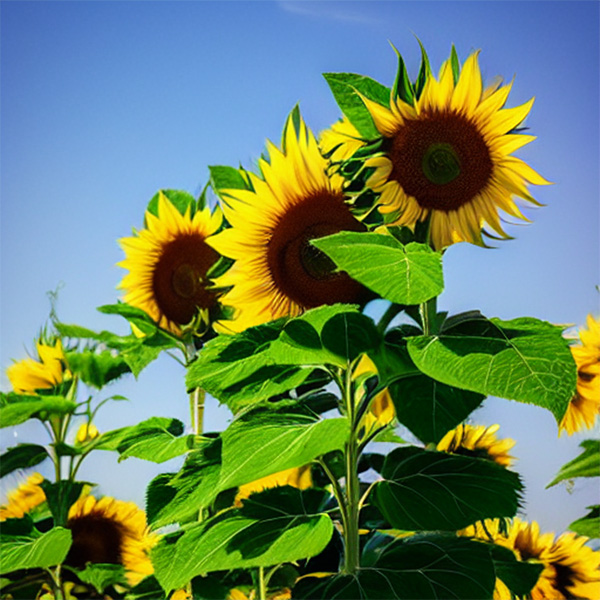
Sunflowers (Helianthus annuus) are typically well-suited to USDA Hardiness Zones 1-11, with some variations in different species and varieties. These zones are based on the average annual extreme minimum Winter temperatures in different regions of the United States. Here are some examples of US states and the growing zones they fall into:
- Zone 1-2: These extremely cold zones include northern parts of Alaska.
- Zone 3-5: Examples of states in these zones include North Dakota, South Dakota, Montana, and Minnesota.
- Zone 6-8: States in these zones include Illinois, Ohio, Tennessee, and parts of Texas and North Carolina.
- Zone 9-11: In the warmest parts of the US, you can find Zone 9 in Florida, southern Texas, and southern Arizona. Zones 10 and 11 include Hawaii (with regions that reach into Zone 12!). In the contiguous US, Zone 11 is only in the extreme southern tip of Florida.
Sunflowers are known for their ability to thrive in warm and sunny conditions, so they can be grown outdoors in most parts of the United States. However, the specific variety of sunflower you choose may have different preferences in terms of temperature and growing conditions. Be sure to select a variety that is well-suited to your local climate and growing season.
As for growing sunflowers indoors, it’s possible, but they are typically best suited for outdoor cultivation. Sunflowers are known for their tall growth and large flower heads, and they require a lot of sunlight to thrive. When grown indoors, they may become leggy and struggle to reach their full potential. If you want to attempt growing sunflowers indoors, you’ll need a very sunny and spacious area like a greenhouse or a large, south-facing window. Keep in mind that indoor sunflower growth may not yield the same results as outdoor cultivation, but it can be an interesting experiment or a way to enjoy a bit of sunshine indoors.
In general, sunflowers like to grow where they’re planted. They don’t like to have their roots disturbed; transplanting seedlings can result in a harvest of disappointment. If you can plant them outside from the outset, that will increase your chances of successful sunflowers.
Check out the USDA Plant Hardiness Zone Map and find out what zone your zip code is located in. Or you can use our map to get a general idea of your plant hardiness zone.



 Previous
Previous

